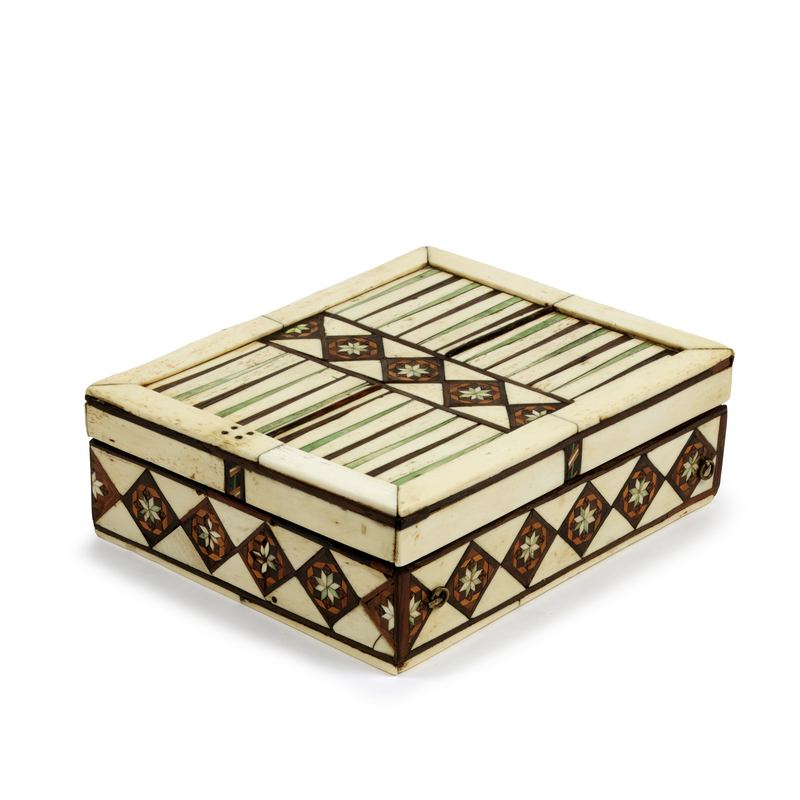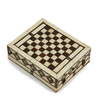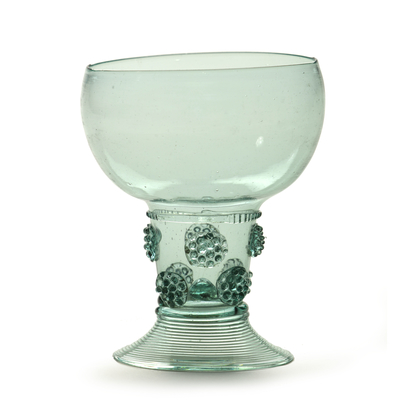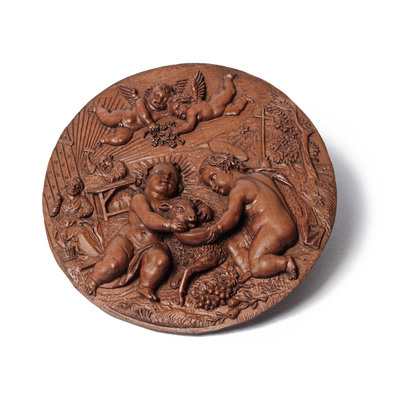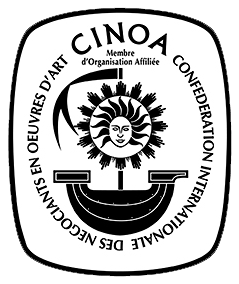Games box chess and tric trac, Embriachi school
Global shipping available
- Origin
- Northern Italy, Embriachi school
- Period
- Second half 15th century
- Material
- Lime wood base, glued with wood and bone (some colored green), brass rings
- Height
- 6.5 cm
- Width
- 19 cm
- Depth
- 15.5 cm
- Literature
E. Berger, Prunk-Kassetten: Europäischen Meisterwerke aus acht Jahrhunderten / Ornamental Caskets: Eight Centuries of European Craftsmanship, Hanns Schell Collection, Stuttgart/Graz 1998, pp. 89-101.
F. Gualandi, L. Mor & G. Gaggioli, Capsellae. Cassette-reliquario e cofanetti della collezione Fornaro Gaggioli. Secoli XIII-XVI, Bologna 2006, pp. 24-26.
P. Lorenzelli & A. Veca, Tra/e: Teche, pissidi, cofani e forzieri dall’Alto Medioevo al Barocco, Gallereria Lorenzelli, Bergamo 1984, p. 337-344.
M. Pall, Versperrbare Kostbarkeiten, Kästchen und Kabinette aus der Welt, Hanns Schell Collection, Graz 2006, p. 38.
Questions about this object?
Please use one of the contact options below:
Description
With this beautiful games box one could play chess or tric trac. When folded, the box stores the tric trac discs and dice. The board has a border which prevents the pieces from rolling off. Four iron eyelets allowed a rope or chain to be attached for carrying the box. These patterns are created with the contrasting colors of wood, (colored) bone and pewter. This is ‘intarsia technique’, a term derived from the Arabic 'tarsi', which means 'incrustation'. The application of geometrical motifs is in Italy known as marquetry ‘alla Certosina’, named after the Certosina Church in Pavia with its famous altarpiece decorated in this way. ‘Alla Certosina’ became famous through the Northern Italian Embriachi family who achieved a particularly high standard in working in this technique. Venice in particular was known for the production of these luxurious game boxes.
